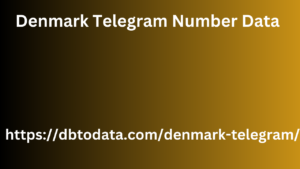Post by account_disabled on Mar 9, 2024 4:13:37 GMT -6
How the method works Start with a set of index cards or Post-It notes. On each of them, write a term, for example the name of the page or a description of the content. Each card represents a page or category of your website. Typical page names are: “About Us”, “Home”, “Products”, “Cart”, “Account”, etc. Test subjects, or people representative of your ideal customers, receive a set of cards with terms already written on them. Ask these subjects to put the terms into logical groups. Then they have to come up with a name for each group. Repeat the process with each subject. After doing the exercise with all participants, analyze the data and look for patterns. Use these templates to organize sections and content in your menus. Three main types of card sorting Open Card Sorting : Test subjects create category names. In this case, you get information about your visitors thinking and classifying objects. Closed Card Sorting : Test subjects are provided with a predefined set of categories.
Their goal is to assign cards by categories. Modified Delphy method : This Denmark Telegram Number Data is an iterative method, where each test subject works on a single classification. Typical entry points are: Organic search Paid advertising Social media E-mail Press or news Direct connection From the starting point, based on the scenarios defined previously, it is possible to design possible flows like these: At each stage of the flow, users should find the right information at the right time to convert them into customers. Many websites make the mistake of asking for something too early (sale, sign up, etc.). Without enough information, people won't interact with you that way.

The goal of designing and implementing the right flow is to move people along the funnel towards the desired final action. Each step should be optimized for conversion with a clear, benefit-oriented value proposition. Headlines are very important and should make the user continue reading. The goal is to guide them towards the call to action. Optimal menu structure When creating a professional website, making information easy for your users to find is key. One of the most critical aspects is the structure of the navigation and therefore of the menu, especially if your site contains a lot of information. One of the most effective ways to build your website's navigation structure and menus is a technique called card sorting . This method helps find patterns in how users would expect to find content or functionality.
Their goal is to assign cards by categories. Modified Delphy method : This Denmark Telegram Number Data is an iterative method, where each test subject works on a single classification. Typical entry points are: Organic search Paid advertising Social media E-mail Press or news Direct connection From the starting point, based on the scenarios defined previously, it is possible to design possible flows like these: At each stage of the flow, users should find the right information at the right time to convert them into customers. Many websites make the mistake of asking for something too early (sale, sign up, etc.). Without enough information, people won't interact with you that way.

The goal of designing and implementing the right flow is to move people along the funnel towards the desired final action. Each step should be optimized for conversion with a clear, benefit-oriented value proposition. Headlines are very important and should make the user continue reading. The goal is to guide them towards the call to action. Optimal menu structure When creating a professional website, making information easy for your users to find is key. One of the most critical aspects is the structure of the navigation and therefore of the menu, especially if your site contains a lot of information. One of the most effective ways to build your website's navigation structure and menus is a technique called card sorting . This method helps find patterns in how users would expect to find content or functionality.


